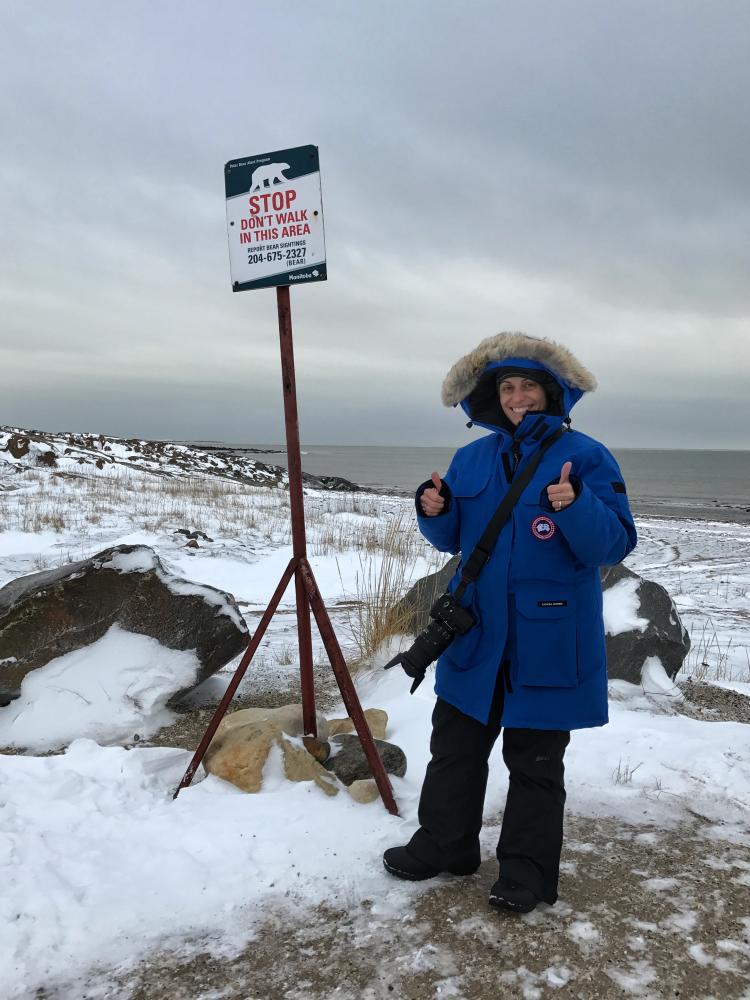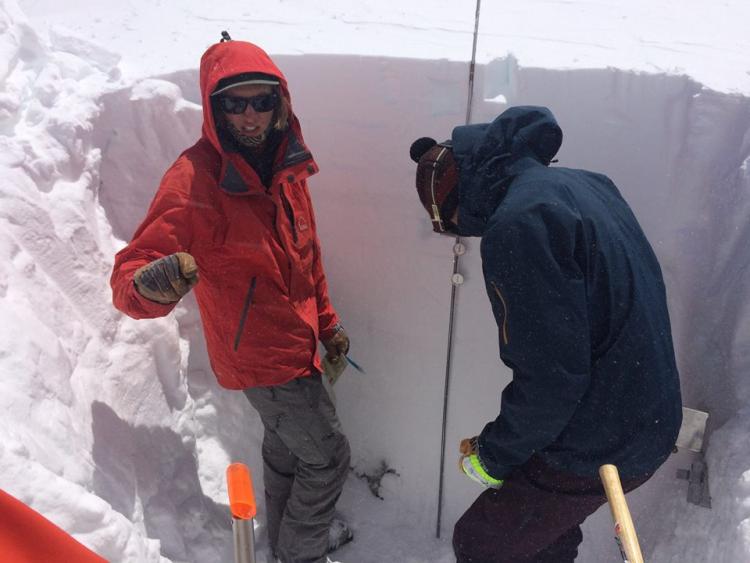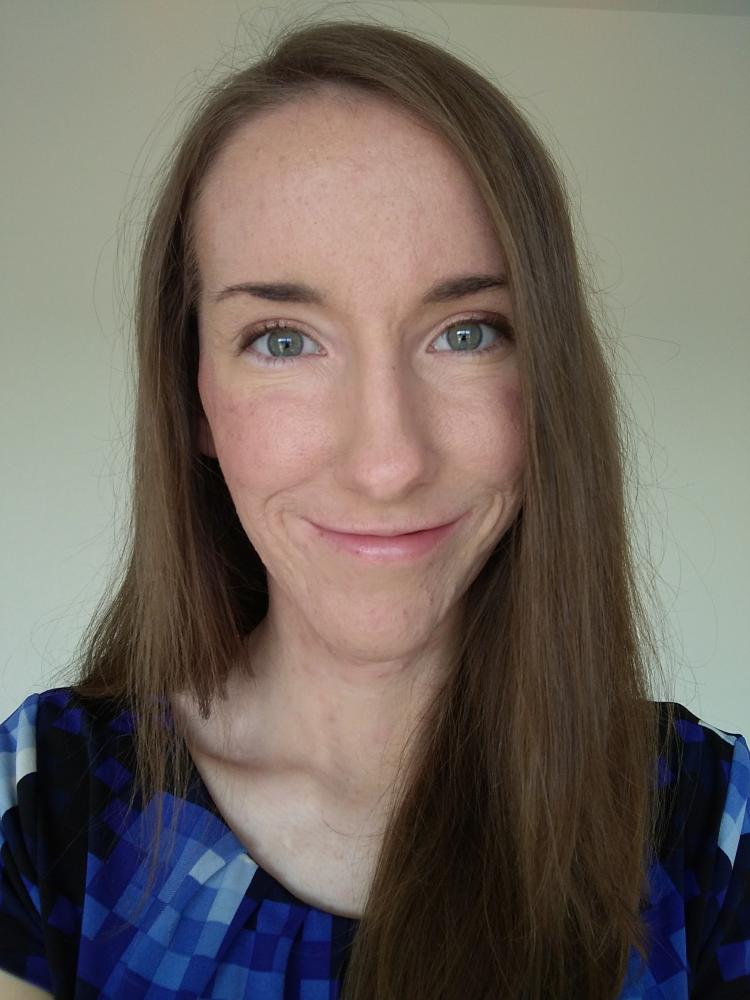Inside the Greenhouse, climate discourse cools down
Professors in theatre, biology and environmental studies team up to focus on creatively communicating climate science through the arts and social sciences
Where one stands on the validity of climate change science depends largely on where one sits on the political spectrum, surveys show. This fact vexes people who respond to climate science doubt by producing more data.
But relying solely on facts doesn’t necessarily advance the discussion, and, thanks to confirmation bias, can actually harden opinions. This is one reason a trio of scholars at the University of Colorado Boulder is practicing and teaching ways to advance climate discourse through the arts and social sciences.

Barbara MacFerrin in Churchill, Canada. At top of page, Rebecca Safran, Max Boykoff and Beth Osnes. Top photo by Casey Cass.
CU Boulder’s Inside the Greenhouse project describes itself as a “collective of professors, students, scholars, practitioners” who creatively frame climate change issues in ways that emphasize people’s common ground. The trio of faculty members who launched the project teach courses in creative climate communication and in climate change and film.
The project’s mission is to “to deepen our understanding of how issues associated with climate change are/can be communicated, by creating artifacts through interactive theatre, film, fine art, performance art, television programming, and appraising as well as extracting effective methods for multimodal climate communication.”
Associate Professors Max Boykoff of environmental studies, Beth Osnes of theatre and dance, and Rebecca Safran of ecology and evolutionary biology, say their initiative springs partly from the fact that climate change discourse often breaks down.
“People keep throwing scientific information at people, thinking that’s going to change their behavior, and we see time and time again that it doesn’t,” Osnes recently told Colorado Public Radio.
Osnes and her colleagues believe better discourse is possible. Students who’ve taken Inside the Greenhouse courses concur.
Barbara MacFerrin, who graduated with a master’s in technology, media and society from the ATLAS Institute this year, has taken Osnes’ Creative Climate Communications class and Safran’s Climate Change and Film course. A professional photographer herself, MacFerrin wanted to fuse her passion for photography and film with a desire to communicate climate change information effectively.
While in the class, she created a video for the “More Than Scientists” project, a nonprofit initiative that disseminates short video interviews with climate scientists that strives to show the humans working in climatology.
MacFerrin’s film (below) featured her husband, Mike, a research glaciologist at CU Boulder, and highlights his feelings about the dramatic melting of the Greenland ice sheet.
[video:https://youtu.be/6ISzoVMGn4o]
MacFerrin later worked with the city of Boulder Youth Opportunity Advisory Board, where she helped develop and produce a short film about climate change mitigation in Boulder. She also traveled to Churchill, Manitoba, last year to film polar bears in the wild.
She praises the program: “I think Inside the Greenhouse is a great initiative, is effective in getting students creatively involved with climate change communication efforts, and offers many opportunities to get engaged.”

Curtis Beutler
Curtis Beutler, who earned his bachelor’s in environmental studies in 2016 and is now a field and data assistant at the Niwot Ridge Long Term Ecological Research program, focused his studies on the natural sciences behind environmental issues.
“But even with the majority of my coursework focused on science and research, the topics of outreach and communication kept coming up,” he said. In particular, having the chance to interact with climate scientists from the National Center for Atmospheric Research and the National Oceanic and Atmospheric Administration—and hearing them stress the importance of public outreach—“spurred my interest in taking on the role of communicator.”
Boykoff’s class focused on “translating our already proficient working knowledge of atmospheric and climate science into meaningful and effective outlets,” Beutler said. This work focused on mass media and studying how to break down personal barriers to polarized topics, he said.
“Inside the Greenhouse, in my experience, thoroughly exceeded its mission to push interdisciplinary students out of their comfort zones and regular roles as to become storytellers and active participants in the dialogue on climate change,” Beutler said. “No matter their background, students learned how to utilize the pathos (emotional reasoning) of a community to convey a message of scientific rationality and humanitarian importance.”

Meagan Webber
Meagan Webber, who earned her bachelor’s in environmental studies in 2016, is now a graphic designer living in Malaysia.
She took the Creative Climate Communication class because, “I had come to realize the importance of properly framing and delivering messages about human-caused climate change and wanted to hone my skills in that area.”
She wanted to learn more about video editing in particular.
Before taking the class, Webber recalled, “I thought that if people would only listen to the facts, then we could solve the issue of human caused climate change more easily. Taking this class taught me how to really step into my audiences’ shoes and see the messages from their eyes.”
Webber noted that the “More Than Scientists” project aims to help viewers who don't have strong opinions about climate change “connect to the issue on a human level” through the eyes of the scientist.
Webber and a team of fellow students interviewed Mark Serreze, director of the CU Boulder National Snow and Ice Data Center, an expert on Arctic sea ice, professor of geography and one of the university’s most highly cited researchers.
Max Boykoff’s research and creative work focuses on cultural politics and environmental governance, creative climate communications, science-policy interactions, disaster risk reduction and climate adaptation.
Beth Osnes’ research focuses on using theatre as a tool for women to empower their voices for self-advocacy and civic participation and employing community engagement through performance for city planning for resilience.
Rebecca Safran is an integrative evolutionary behavioral and evolutionary ecologist whose research focuses on the evolution of biological diversity, from molecular, individual, and population perspectives.
Instead of focusing mostly on the data that he studies, “we framed the interview around his personal connections to the issue, starting with his childhood memories of playing in the snow and ice of Maine winters.”
Serreze discussed an ice cap that he had studied as a graduate student and noted that it has shrunk significantly since then. He is emotionally attached to the ice cap and is upset that it’s vanishing.
“The goal is for viewers to relate to those memories spent playing in the snow as kids or the attachment to a special place in the natural world that may be disappearing,” Webber said. “If they can relate on that emotional level, the urgency of acting on climate change may become clearer.”
She added: “Art has the power to touch people's hearts and minds, inspiring them to live to their highest potential and improve their communities. This makes artistic expression, from videos to dance to comedy, an important vehicle for communication about such a grave topic.”
Clarissa Coburn, an English major who took Creative Climate Communication in spring 2016, concurred.
Before taking the class, she thought conveying the scientific data was all that was necessary. “This class showed me that the science is just the beginning,” Corburn said. “All the climate science in the world won't help us if people do not know, do not understand, or do not care about the information.”
For more information on Inside the Greenhouse, click here.

